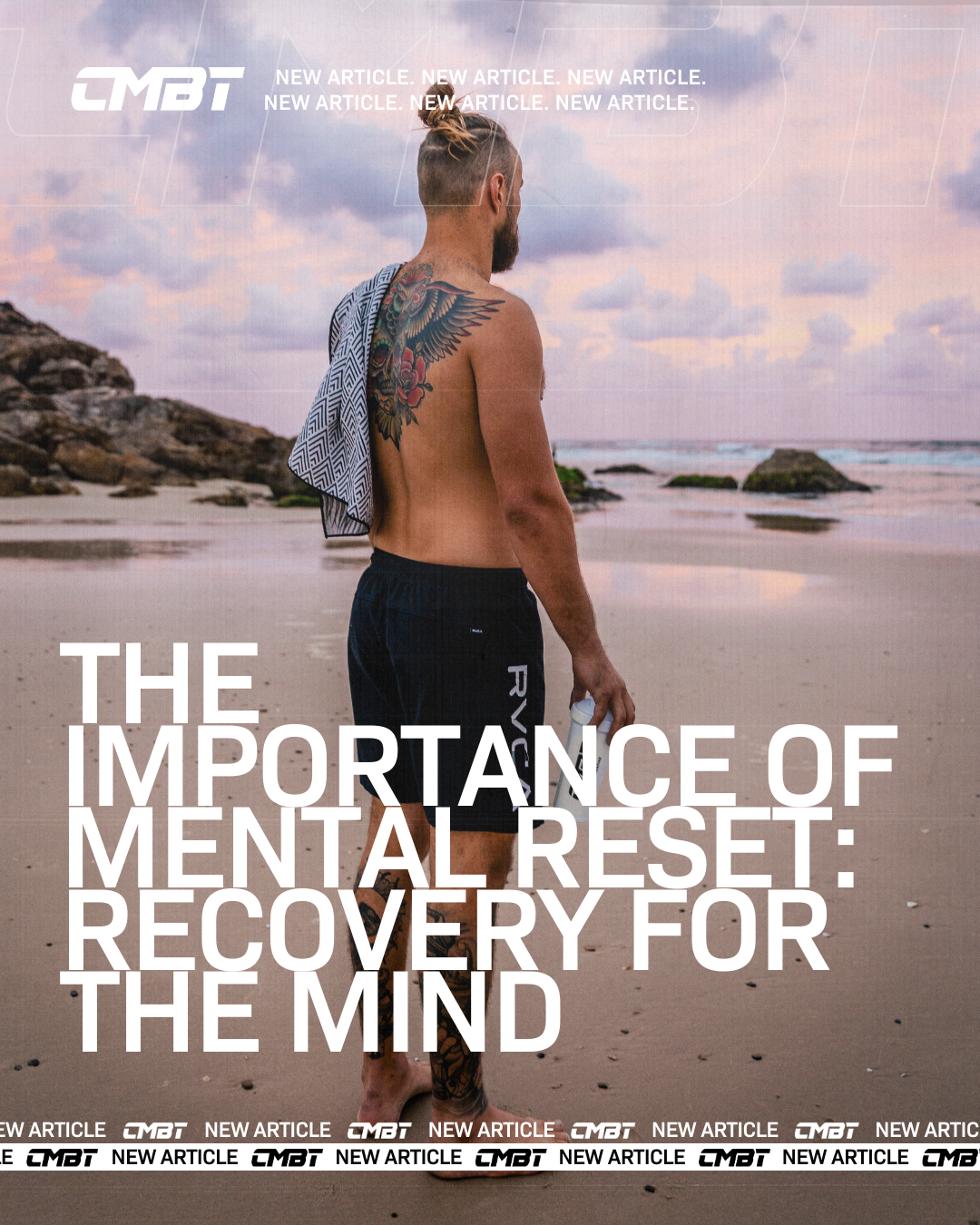The saying ‘less is more’ seems to become an increasingly distant concept in our modern lives. We’re encouraged to give 110% at all times and often drilled with the mentality that if you want something, you have to work for it. Hard work is not only rewarded, it’s celebrated, admired...but this is where some danger may lie. Working hard and persevering is great, there’s no doubt about it, but how can you tell when you’ve pushed yourself too far?
Oftentimes your body will let you know loud and clear. This may be hard for some of you to hear, but you’re not invincible. You may be able to attack everything in life with maximum force for a while, but everything that goes up must come back down - and if you’ve burned out your engines, you’ll end up crashing.
This is especially prevalent when it comes to training too much - and yes, there is such a thing. Referred to as overtraining syndrome (OTS), this state of imbalance occurs due to an overload of physical, biochemical and/or mental-emotional stress. The concept sounds simple, yet in reality the causes and signs are complicated and multifaceted, leading to a lack of consensus for a solid definition among health and fitness professionals. To make matters even more difficult, it’s not diagnosable in a single test. So then, how can you tell? Allow us to explain further…

What causes overtraining syndrome and how can I spot it?
OTS is often a result of increased training volume (time spent training) and exercise intensity (measured by heart rate). Yet there is another component that is a crucial decider of whether your body enters this overworked state: recovery.
Recovery. Is. Key. No matter how perfect your training program and no matter who formulates it, failure is bound to occur without adequate rest. This is when you actually reap the results - not during your actual time and effort spent in the gym. The equation for successful exercise is simple:
Results = Exercise + Recovery
Some stressors that can trigger a state of overtraining syndrome include:
- Increased high-intensity training, such as longer intervals or heavier weights.
- Increased exercise volume (more hours per day or week).
- Poor diet (not adequately meeting nutritional needs).
- Not allowing the body to sufficiently recover.
- Diminished health (allergies, sickness, asthma).
- Other stress unrelated to exercise, such as personal or social.
Overtraining can significantly hinder your performance, but it can be hard to spot when you’re in the eye of the storm. People will often experience OTS in unique ways, so it can be an elusive condition to identify. That is, of course, until it’s too late.
Despite the high incidence of OTS and its consequences, the precise underlying triggers and specific patterns of OTS remain unclear.
One study published in the Journal of Sports Sciences found that disturbed sleep, insufficient caloric intake, and excessive mental effort may trigger OTS, which leads to a worsening in overall mood, increased body fat, decreased hydration, and decreased libido.
These symptoms may sound extremely vague - most of us would experience at least one of these on a weekly basis! However, whilst OTS may seem like it hits you from thin air, it actually develops in three stages. Let’s break this down...
Stage 1:
You probably won’t even know it when you’re in the midst of the first stage of OTS. In fact, it’s entirely possible that you don’t experience any symptoms at all. This stage is characterised by the transition from functional to non-functional overreaching, where the muscle damage caused by the intensity of training requires such a long recovery period that any increase in strength dissipates during this time.
This stage is associated with increased stress hormone production and time spent in sympathetic activity (think the ‘fight’ mode in fight or flight). Some indicators you may experiences are:
- Fatigue during the day
- More physical soreness or vulnerability to injuries in the lower back, knee, ankle or foot
- Caffeine or sugar cravings
- Reduced quality of sleep
- Reduced libido
- Depression or anxiety

Recovery from this stage can be quite fast (one to three weeks), as long as measures to reduce stress are instigated and maintained. Reducing training volume and intensity, maintaining proper nutrition, and getting the recommended 7 - 9 hours of sleep each night are some important steps in returning back to normal.
Athletes and coaches should be on high alert at all times to recognize any of these potential signs. They may seem small at first, but it’s crucial to take them seriously - it could save you a lot of unnecessary pain in the future.
Top Tip: We created CMBT RELOAD when we were continuously finding ourselves burning out from overtraining, and witnessing the same with training partners and friends. Our premium whole food protein powder and protein bar is formulated with a 4 stage recovery system that has been specifically developed to assist in recovery and reduce the risk of OTS. Click here to find out more.
Stage 2:
To cope with the influx of demands placed on the body, an athlete in this stage may deceptively feel more energy than usual in this stage as the adrenal system kicks into overdrive. This can cause restlessness or excitability, and inhibit the athlete from being able to relax when trying to go to sleep. Consequently, cortisol levels spike and can result in increased insulin. This is exactly what you don’t want as an athlete, because this will slow down the body’s fat burning processes and instead make room for fat storage. This can lead to a nasty cycle:
Training at maximum output → increased carb cravings → carbs being stored as fat rather than potential energy
At least when you get to this point, you’ll probably know it. Some more obvious signs are:
- Deterioration of your aerobic threshold brought on by higher resting, submaximal and maximal heart rates.
- Weakness or tightness of muscles, which can risk injuries to joints, bones and soft tissues and promote chronic physical soreness, fatigue and pain.
- Weakened immune system, leading to increased vulnerability to infections such as colds and flus.
- Reduced gut health, identified through dysfunctions such as increased bloating and intestinal discomfort.
- Higher potential for stress and anxiety.

As you go deeper into the stages of OTS, recovery becomes more demanding. Rehabilitation can take one month, three months, or even longer depending on whether optimal recovery processes are undertaken. Some of the recommendations resemble those of the first phase, however high-intensity training should be stopped altogether during this period.
Stage 3:
Let’s call stage three the red zone: somewhere you never want to be, and it could take anywhere from months to years to fully recover. This is associated with the exhaustion of neurological and hormonal mechanisms, and can bring forth an onslaught of severe consequences. Depression, gut dysfunction, significant physical injury, and low immunity are just a few symptoms of being utterly drained of all mental and physical energy.
All moderate to high-intensity training and long workouts should be stopped. Rest is pivotal, as well as proper nutrition and caloric intake.
Conclusion
Overtraining syndrome is a clinical diagnosis that, realistically, we know very little about. What we do know: it’s not something to be taken lightly. It’s a strenuous, long-winded and destructive condition that destroys your performance and overall health. So if your understanding of ‘no pain, no gain’ means working yourself into the ground, you may want to re-evaluate your definition. There’s no advantage to overtraining.


















































![[VIDEO] Fuel Your Passion feat. Sami Locke](http://cmbt.com.au/cdn/shop/articles/Sami.jpg?v=1625826844&width=1600)